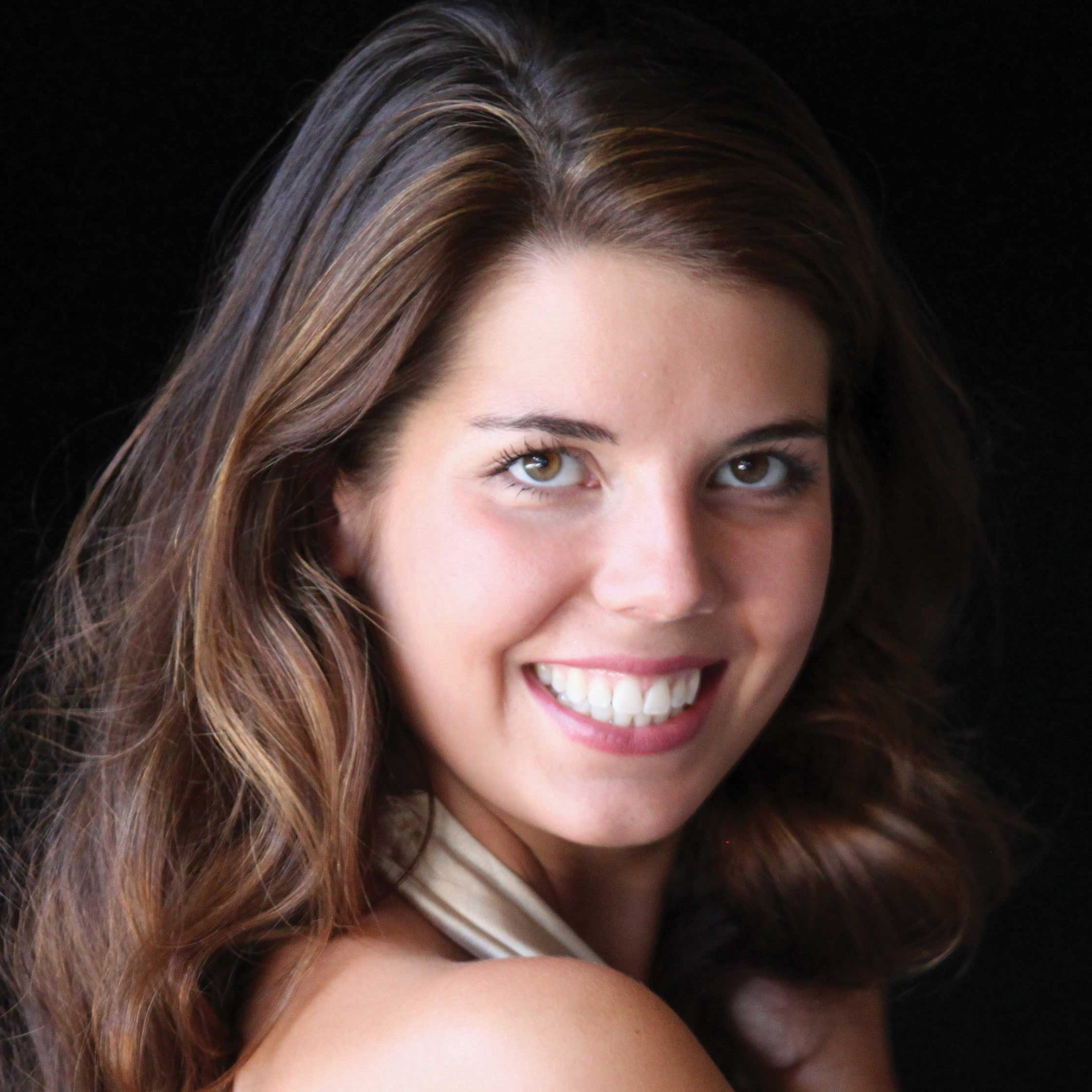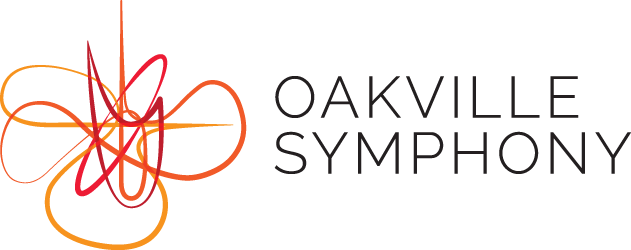Guest Artist:
Christopher Goodpasture, Piano
Tessa Laengert, Soprano
Program
GERSHWIN – An American in Paris Arias by Puccini and Charpentier
RACHMANINOV – Piano Concerto #2
May 4–5, 2019
Oakville Performing Arts Centre
Program Notes
George Gershwin (1898 – 1937): An American in Paris
Gershwin had achieved international fame with his Rhapsody in Blue (1924) and the Piano Concerto (1925) (performed most recently by the OSO in 2017 and 2016, respectively). Based on a commission from the New York Philharmonic for a new piece in 1928, Gershwin created this tone poem, inspired by his own visits to Paris. It has long been debated if Gershwin was really a “serious” composer, but while in Paris, he was influenced by several other composers, including Prokofiev, Ravel, and Stravinsky. Gershwin himself, in turn, influenced those same people.
Gershwin denied that he had a detailed program associated with the piece we are performing today, but he did provide an outline. An American is strolling in the streets of Paris, enjoying its atmosphere. Traffic is heard, with off-key blasts of taxi horns (Gershwin had famously bought some real ones in Paris). In a slower middle section, the trumpet plays the “homesick blues”, later interrupted by a Charleston (on two trumpets). Finally, the “blues” theme is transformed from sadness into joy, and the sights and sounds of Paris shine through once more.
Sergei Rachmaninov (1873-1943): Piano Concerto No. 2 in C minor, Op. 18
- Moderato II. Adagio sostenuto III. Allegro scherzando
This work reflects a triumph over adversity. After the disastrous reception of his first symphony in 1897 (the conductor, Glazunov, had arrived drunk, and did not take the work seriously), Rachmaninov endured a three-year period of intense depression. He consulted a hypnotist, Dr. Dahl, who used subliminal techniques to restore Rachmaninov’s confidence in his ability to write a new piano concerto. Composition began in 1900, and the work was premiered in Moscow in the following year, with Rachmaninov himself as soloist. The music describes Rachmaninov’s progression from sombre introspection at the opening, to the triumphant Finale, celebrating his release. The work is dedicated to Dr. Dahl – and in fact the violas are used more frequently than usual, acknowledging Dahl’s own musicianship as a violist. It is now one of the most popular piano concertos by any composer.
The concerto’s morbid opening has eight poignant chords that gradually build in tension and lead to a soaring second theme. The “romantic” second movement begins on muted strings, and continues with a wistful melody on the flute and clarinet, which then become a counterpoint to a theme in the piano. These roles are later reversed. Again, the emotional level builds to a climax, and a beautiful coda. The vigorous finale has echoes of Tchaikovsky.
Notes © by Stephen Walter
About Christopher Goodpasture

Praised by the Washington Post for his “sparkling, highly musical” playing, Christopher Goodpasture has established himself as a musician of refined style. The Toronto Concert Review described his playing as a “rare combination of strength, energy and sublime musical sensitivity…matched by a heavenly sense of melodic line”. His imaginative approach to programming reflects a penchant for unusual repertoire and narrative that is both unconventional and provocative. He has performed recitals in concert venues throughout North America, including the Kennedy Center (Washington D.C.), Benaroya Hall (Seattle), Koerner Hall (Toronto), Alice Tully Hall, Merkin Hall, Weill Recital Hall (New York), Bing Concert Hall (San Francisco), and the Los Angeles County Museum of Art.
Recent and upcoming orchestral appearances include concertos with the Sioux City Symphony, The Oakville Symphony, Northumberland Orchestra, Acadiana Symphony Orchestra, and the Chamber Orchestra of New York. Among his forthcoming projects is a debut album to be recorded in 2019 on the KNS Classical Records label as well as an album exploring atmosphere seen through the imagination of composers including Bartók, Janáček, Debussy, Haydn, Takemitsu and Australian composer Peter Sculthorpe to be released on the Southern California based Yarlung Records.
Christopher is a top-prize winner of the Washington International, Seattle International, Iowa International and Dallas International Piano Competitions, as well as the Serge and Olga Koussevitzky Competition for Pianists. He holds graduate degrees from Yale University and The Juilliard School, where his teachers included Hung-Kuan Chen, Peter Frankl, Jerome Lowenthal and Christopher Elton. Born in Los Angeles, California, his formal training began at the Pasadena Conservatory, where he enrolled in theory, chamber music, and for four years, composition with award-winning American composer, Andrew Norman. He continued his studies with Stewart Gordon and John Perry at the University of Southern California and the Royal Conservatory of Music in Toronto.
From a young age, Christopher developed a keen interest in collaboration and now is a sought-after chamber musician, having played for and collaborated with a number of noted musicians. He has appeared as a fellow in Ravinia’s Steans Music Institute, in the intensive chamber music program of David Finckel and Wu Han in Aspen, at the Music Academy of the West, and in the festivals of Kneisel Hall, Sarasota and Banff. Among his collaborators are members of the Takacs, Ysaye, St. Lawrence, Amenda, Guarneri, and Tokyo String Quartets. Christopher’s work with pianists Seymour Lipkin, Joseph Kalichstein, Robert Levin, Claude Frank, Leon Fleisher and violinists Pamela Frank and Sylvia Rosenberg has left a meaningful impact on his work as a chamber musician.
Currently, Christopher is a member of New York based Ensemble Connect (formerly Ensemble ACJW), a fellowship program of Carnegie Hall, the Juilliard School and the Weill Institute in partnership with the New York City Department of Education and with an emphasis on audience engagement, teaching and performing chamber music.
About Tessa Laengert

Lyric soprano Tessa Laengert is an emerging young artist based in Toronto. Tessa is quickly establishing herself in both operatic and concert performances. She made her principal role debut with the Summer Opera Lyric Theatre in 2013 in the title role of Mimi in La Bohème, as well as her role debut with Opera in Concert in Impresario (2013). Previously she performed with Against the Grain Theatre in their production of Handel’s Messiah in Toronto and this season with Opera Atelier and Opera in Concert. Last season she made her debut with the Oakville Chamber Orchestra, and with Masterworks of Oakville where she performed Poulenc’s Gloria and Mozart’s Requiem with Brott Music Festival. This season, Tessa will be performing the title role of Gretel in Hansel & Gretel with Shoestring Opera.
Tessa has performed with the Black Creek Music Festival, Georgian Bay Symphony, Orpheus Choir of Toronto, Canadian Opera Company, Schola Cantorum, Opera In Concert, Against the Grain Theatre, Opera Atelier, Tapestry Opera and Brott Music Festival.
Tessa graduated from the University of Toronto in voice performance after being awarded the prestigious Robert William Bygrave full tuition scholarship. She has trained and performed in various opera programs such as Songfest Vocal Institute, Tafelmusik Baroque Summer Institute, the Royal Conservatory of Music Opera Program, Operatic Arts Academy, Italy and most recently with the Summer Opera Lyric Theatre and the prestigious St. Andrew’s Opera Workshop.
Tessa is a voice teacher and vocal coach at Branksome Hall in Toronto. Tessa worked with the Canadian Children’s Opera Company as a conductor of the Butterfly and Ruby Choruses and as vocal coach to the principal chorus for three seasons.
Tessa studied under the tutelage of soprano Lorna MacDonald, mezzo-soprano Jean MacPhail, mezzo-soprano Laura Tucker and vocal coach Rachel Andrist.
